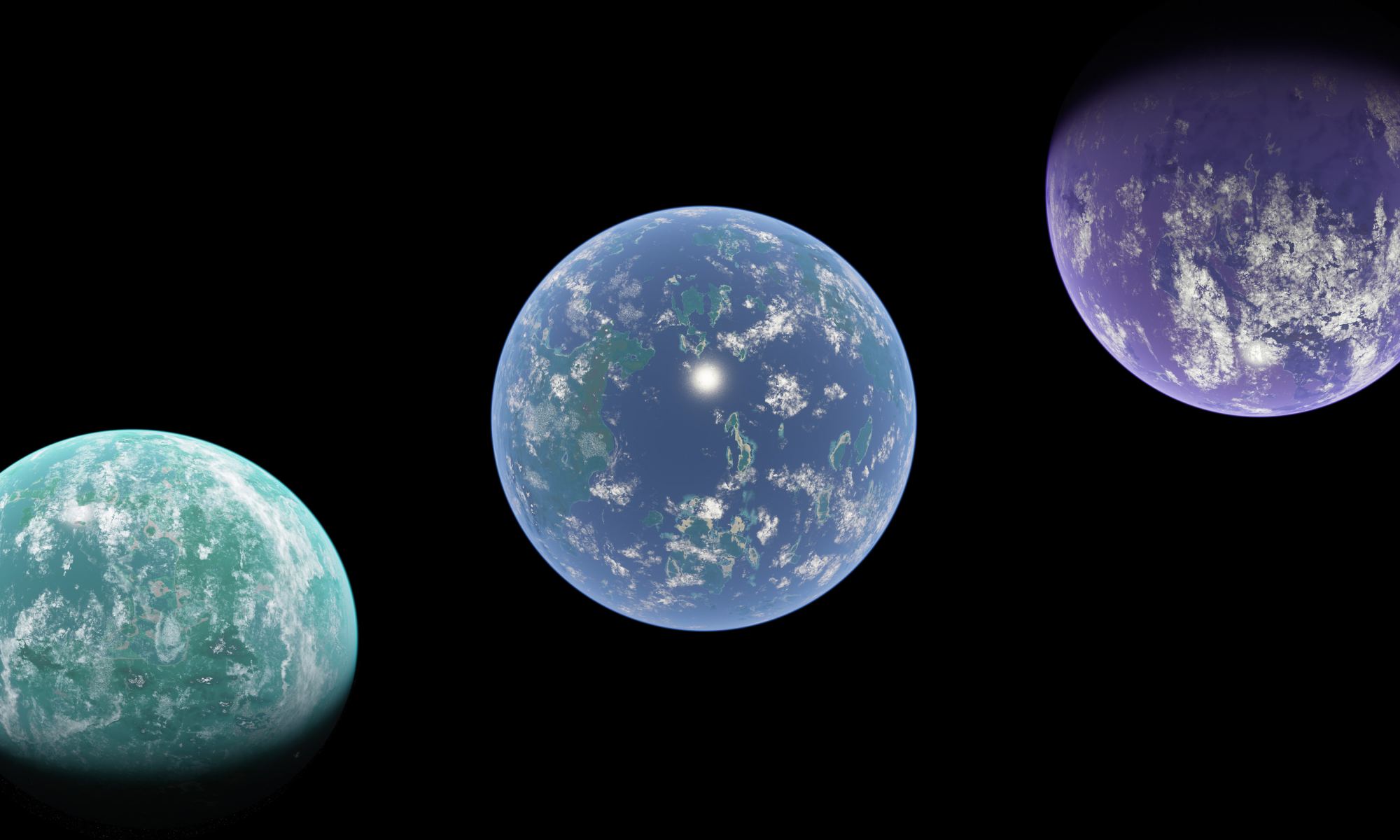
“This is where we live. On the blue dot, "said Carl Sagan after the release of the famous" pale blue dot " photograph . The photo was taken by the Voyager 1 space probe on February 14, 1990 from a distance of 6 billion km. To this day, this photograph remains the most distant photograph of the Earth. In February of this year, she turned 30, and in honor of which she was processed using modern digital methods, and received an even more impressive image. (clickable) An updated version of the "pale blue dot" photo using modern programs and technologies for image processing

A pale blue dot or a blue ball - in any case, our planet is associated with blue. And since Earth is the only inhabited planet known to us, it is reasonable to assume that other inhabited planets will be blue. However, the reality is not that simple.
What is color?
Astronomers refer to color as the intensity of light at a particular wavelength. Light is electromagnetic radiation (EMP) that travels through space like waves on the surface of water. The wavelength determines the color. For example, EMR with a wavelength of about 450 nm looks blue to us.
However, what people think of as color actually represents only a small fraction of the entire wavelength of the electromagnetic spectrum. Telescopes can pick up gaps in the spectrum that are beyond what we can see with our eyes. Infrared or ultraviolet radiation can also be considered "color". The night sky would seem to us much brighter if we could see the entire range of EMP.
The upcoming James Webb Space Telescope can detect the infrared spectrum. Infrared wavesit is easier to pass through interstellar dust and gas than visible light. As a result, the telescope will be able to "see" through these obstacles.
And what's most interesting, color can tell us a lot about the object under study. A star's color is related to its surface temperature. Red stars are colder, blue stars are hotter. Color also indicates the composition of the object. The color of the atmosphere is related to the composition of the air. The color of the light reflected from a surface indicates the characteristics of that surface. The color of a space object usually consists of several colors.
The earth is not just blue, its color is mixed with several colors, each of which is associated with certain surfaces and gases. Every surface and every gas in the atmosphere leaves its own unique signature on the waves of sunlight falling on them and changing their color as a result. When light hits a plant leaf, the chlorophyll it contains absorbs some of the wave's energy, reflecting the green and infrared portions back into space. The interaction of light with matter is studied by the science of spectroscopy.
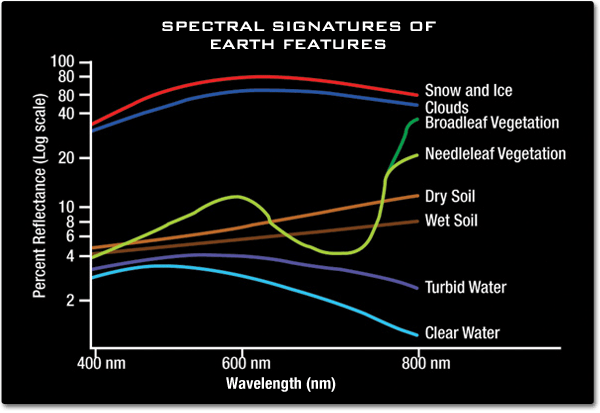
Colors and reflectivity of various earth surfaces
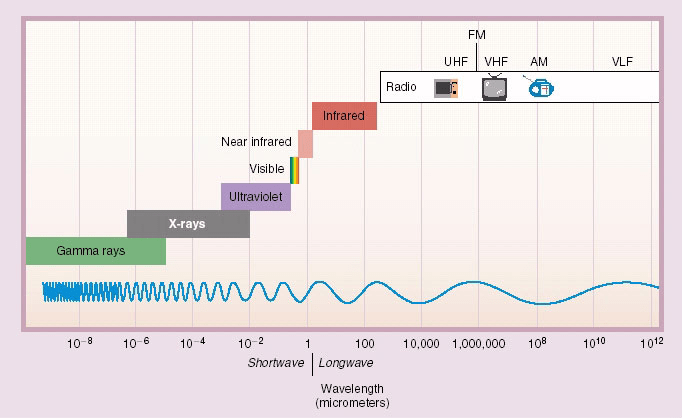
EMP spectrum - note that the light we see (visible) is only a small part of it
What about a distant world - an exoplanet - revolving around a star? The color of a distant world can tell us about its habitability. We cannot use warp drives or go into hyperspace to reach these planets, and instead use the information we receive from them at the speed of light.
There are two main problems of spectrographic studies of exoplanets similar to the Earth.
First, our current generation of telescopes lack the resolution to distinguish light reflected from an Earth-sized planet from that of its star. For this, the distance to these objects turns out to be too far (remember how small the Earth seems from a distance of 6 billion km - and here we are talking about hundreds of trillions). The light of the star and the planet merges.
We know that exoplanets exist, we know their size, whether they are similar to Earth, around which stars they revolve - but today we see little else.
Secondly, even if our telescopes can study the light of an individual planet, we do not have a plate with colors that would help us figure out what exactly we see - we have nothing to compare with. We do not know what another Earth would look like, orbiting another star, from a distance of hundreds of light years. And our Earth would look differently in the light of a red or blue sun.
Fortunately, we are now dealing with both problems.
Telescope Projects of the Future
A new generation of high-resolution telescopes looms on the horizon. Space telescopes, notably James Webb , HabEx and LUVOIR . Ground-based telescopes such as the giant Magellanic telescope . Their resolution will allow the separation of light from a relatively dim planet and its glowing star.
Expecting an increase in telescope resolution, Jack Madden, PhD in astrophysics at Cornell University, compiled a color guidefor earthlike worlds revolving around other stars. The handbook, created through computer simulations, can be used to interpret the colors of the worlds we observe and determine their habitability.
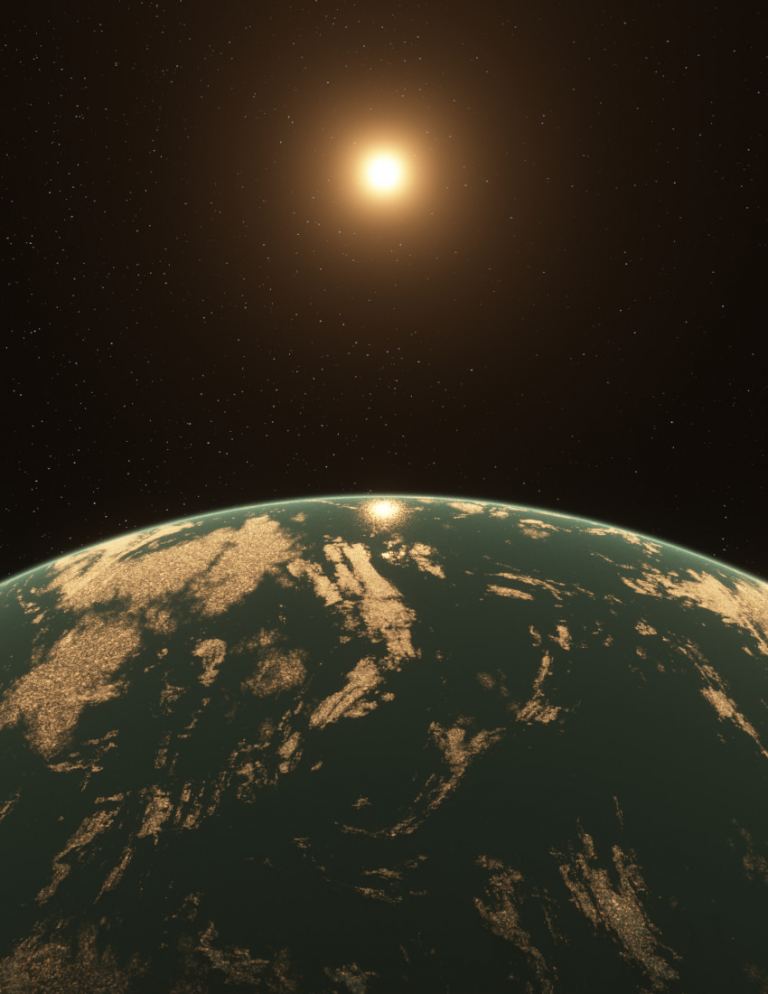
An exoplanet like this could have a blue atmosphere that resembles that of Earth. Under the light of a red star, it has a greenish tint.
Madden created simulated Earths by combining surface types found on our own planet: seawater, basalt, granite, sand, trees, grass, snow, and clouds. Some of the simulated planets were given a single surface type - for example, planets completely covered by jungle / forests (like Endor from Return of the Jedi); snowy worlds (like Hoth from The Empire Strikes Back); desert worlds (Tatooine from A New Hope). Some are counted with a combination of several types, like Earth. For each of the planets, different options were considered, including those with 70% water coverage, like that of the Earth, without clouds at all, or with 44% cloud coverage, like our average.
Then these planets were placed in the habitable zone of simulated stars - at such a distance that they received enough energy to keep water on the surface in a liquid state. The surface temperatures of simulated stars ranged from 3900 K to 7400 K, corresponding to 12 classes and subclasses of stars , including classes F, G and K.
This range includes both cooler and redder stars compared to our Sun, which is in the G class and has surface temperatures about 5770 K, and hotter and bluer. Even colder M-class stars were excluded from the list. To get enough energy, the planets would have to orbit so close to them that they would be at risk of solar flares. Moreover, such planets would come tosynchronous rotation with the star, and would be turned to it by one side.
As a result, 30 different types of planetary surfaces and 12 different types of stars were simulated. In total, 360 different planets were obtained with wavelengths from 0.4 to 20 microns (which corresponds to the spectrum from visible light to infrared).
“Earth is our only example of an inhabited world. The better we are prepared to find a world that can support peace, but not like Earth, the sooner we can detect signs of its existence. With telescopes at our disposal that can detect signs of life in the atmospheres of distant planets, we will compile an extensive set of models with which we can compare. Based on the observed conditions, we will be able to find out what types of surfaces are capable of maintaining the temperature necessary for the existence of liquid water, ”wrote Jack Madden.

An exoplanet and its moon orbiting a bright F-class star sometimes line up. The scattered light is reflected from the tops of the clouds, and forms a fiery picture for all observers from a certain angle of view.
Habitable colors
The simulated planets have made it possible to create a guide for future telescopes with which it is planned to hunt for exoplanets. By comparing the spectra of observations with simulated Earth-like planets, it will be easier to understand whether we are seeing a cloud-covered jungle world, an ocean planet, an airless rock, or a continental world with many different surface types like Earth.
Simulations also revealed the details of the interaction between the planet's surface and the light emanating from the star. For example, although cooler stars emit less energy than hotter ones, they heat earthlike worlds more efficiently because more radiation falls into the infrared range.
Different types of surfaces, depending on how they absorb or reflect the light of a particular star, also affect the temperature on the planet's surface. Blue surfaces will be cooler under the light of a blue star, while red surfaces will absorb more blue light and warm up.
The color contrast of the planet also changes due to the properties of its surface. A desert planet orbiting a dim K-class star can be twice as bright as an ocean-covered planet orbiting a bright F-class star: seawater reflects less light than sand.
The type of surface of a planet can significantly affect its surface temperature and habitability, as well as how well it can be seen in our telescopes, depending on the type of its star. This information will help us select stars for our future supertelescopes to observe, and exoplanets that we can return to after increasing resolution.
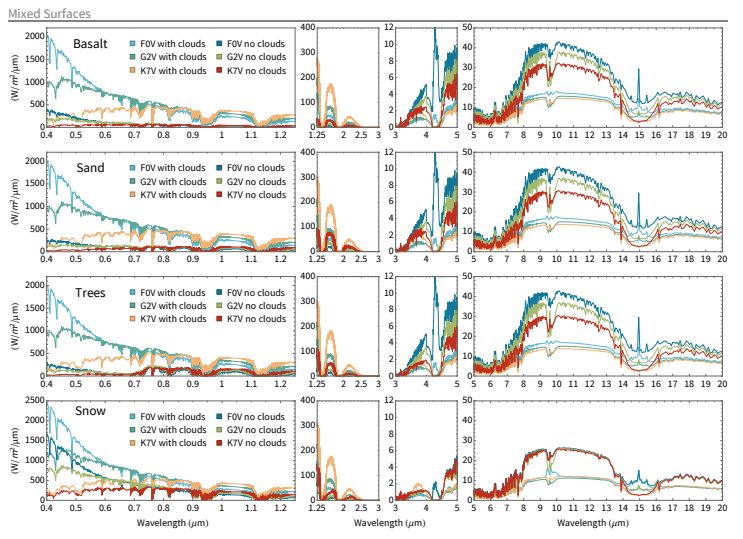
A sample of a combination of reflected and emitted light from simulated exoplanets. Planets with 30% of the surface of different types and 70% of the surface covered by seawater, as well as with and without clouds are represented. The Y-axis represents the amount of energy reflected by a given surface, the X-axis represents the wavelengths.
Having life
Light reflected by a planet's atmosphere can tell us about its composition. Passing through the planet's atmosphere, the star's light changes due to the presence of some gases there. Telescopes can detect these changes.
By simulating all these worlds, it is possible to simplify the task of recognizing the presence of gases such as methane and oxygen in the atmosphere of planets. Usually, methane and oxygen are mutually destroyed, so their continuous presence in the planet's atmosphere (as happens on Earth) may be a sign of biological processes going on there, restoring the reserves of one or both gases.
Plants can also be seen from a great distance thanks to the so-called. The "red edge effect" in the wavelength range of about 700 nm - red and near infrared light. Simulated tree-covered planets have a dramatic increase in reflectivity at this point on the spectrum. Terrestrial plants reflect infrared light to protect themselves from overheating during photosynthesis.
There are other interesting possibilities that are not included in Madden's models. For example, it is unclear how the spectrum of a planet will change, which will not only reflect light, but also emit its own. This light may be the result of bioluminescent organisms on the planet's surface (as on Pandora from Avatar). We will be able to discover such opportunities during the future hunt for planets.
Madden not only simulates the spectroscopic characteristics of planets, but also makes digital drawings on this topic. Some of his works are presented in this article, the rest can be found on his website .